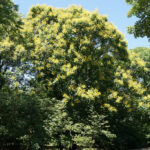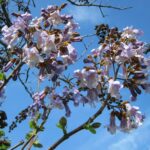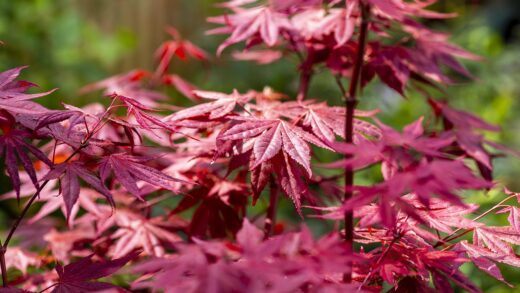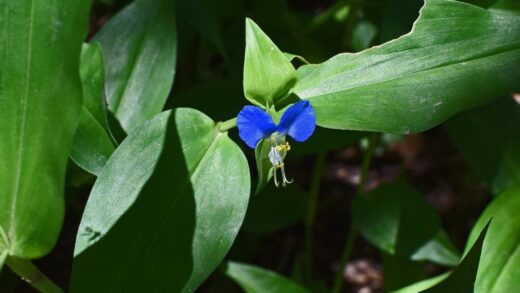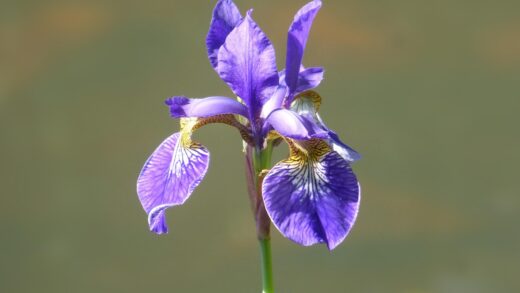Understanding the specific water requirements of the Atlas cedar is fundamental to its health and longevity, as both overwatering and underwatering can lead to significant problems. This majestic tree, native to the mountainous regions of North Africa, has evolved to be remarkably drought-tolerant once it is fully established. However, achieving this state of resilience requires careful and strategic irrigation during its juvenile years. Providing the right amount of water at the right time, especially after planting, is the key to developing a deep and extensive root system that will sustain the tree through the harshest of conditions for its entire life.
During the critical establishment period, which typically lasts for the first two to three growing seasons after planting, the Atlas cedar is highly dependent on supplemental irrigation. The developing root system has not yet grown deep or wide enough to access moisture from a large volume of soil, making it vulnerable to drying out. The goal of your watering strategy during this time is to keep the root ball and the surrounding soil consistently moist, but never saturated. A common mistake is to provide frequent, shallow waterings, which only encourages a shallow root system and does not promote the deep root growth necessary for long-term drought tolerance.
A more effective method is to water deeply and less frequently. This involves applying water slowly over a prolonged period, allowing it to penetrate deep into the soil profile. Using a soaker hose or a drip irrigation system placed around the tree’s drip line is an excellent way to achieve this. Allow the water to run until you are confident that the entire root zone has been thoroughly moistened. Afterward, you should allow the top few inches of soil to dry out before watering again. This cycle of deep hydration followed by a drying period encourages roots to grow downward in search of stable moisture.
The amount of water required will vary significantly based on several factors, including soil type, climate, and recent rainfall. A tree planted in sandy, fast-draining soil will require more frequent watering than one in a heavier loam soil. Similarly, hot, windy, and dry weather will increase the rate of evapotranspiration, necessitating more supplemental water. The best way to determine when to water is not by following a rigid schedule, but by manually checking the soil moisture. Dig down three to four inches near the root ball; if the soil feels dry at that depth, it is time to provide a deep soaking.
As the Atlas cedar matures and its root system becomes well-established, its need for supplemental irrigation will dramatically decrease. A mature tree with a deep root system can typically withstand normal periods of drought without any intervention. However, during prolonged and severe droughts, even a mature tree can show signs of stress, such as browning or dropping needles. In these extreme circumstances, providing a deep, occasional watering can help the tree maintain its vigor and health, ensuring it has the reserves to withstand the stressful conditions.
More articles on this topic
The crucial establishment phase
The first few years after planting represent the most vulnerable period in the life of an Atlas cedar. During this establishment phase, the tree’s primary focus is on expanding its root system from the confines of its original root ball into the surrounding native soil. This process is energy-intensive and requires a consistent supply of moisture to be successful. Without adequate water, root growth will be stunted, and the tree will struggle to establish itself, leading to poor overall health and a higher risk of failure. Your role as a gardener is to bridge this gap by providing reliable irrigation.
Immediately after planting, a thorough soaking is non-negotiable. This initial watering serves multiple purposes: it settles the backfill soil, eliminates air pockets that can dry out roots, and provides the immediate hydration the tree needs to recover from the stress of transplanting. For the first few weeks, you should monitor the soil moisture almost daily, ensuring the root ball never completely dries out. This period is when the tree is most susceptible to transplant shock, and consistent moisture is the best remedy.
Throughout the first full growing season, a consistent watering schedule is vital. A general guideline for a newly planted tree is to provide approximately 10 gallons of water for every inch of trunk diameter, applied once or twice a week in the absence of significant rainfall. The key is to apply this water slowly to the root zone, allowing it to be absorbed rather than running off the surface. This consistent supply of moisture fuels the growth of new roots, which is the primary objective of this phase.
As the tree moves into its second and third years, you can gradually begin to reduce the frequency of watering. This encourages the roots to grow deeper and further out in search of water, building the foundation for future drought resilience. You should still perform deep waterings, but the interval between them can be extended. By the end of the third year, a properly cared-for Atlas cedar should have a sufficiently established root system to withstand typical weather patterns with minimal supplemental irrigation, having successfully navigated this crucial establishment phase.
More articles on this topic
Recognizing signs of water stress
Being able to identify the signs of water stress, both from too little and too much water, is a critical skill for any caretaker of an Atlas cedar. Underwatering, or drought stress, often first manifests as a subtle change in the foliage. The needles may lose their vibrant blue-green or silvery luster and appear dull or grayish. As the stress progresses, the tips of the needles may begin to turn brown, and the tree may start to shed older, interior needles as a mechanism to conserve water.
If drought conditions persist, the new growth at the tips of the branches will be stunted or may wilt. The branches themselves may begin to droop, giving the entire tree a tired, sagging appearance. In severe cases, entire branches may die back, starting from the top of the tree and moving downward. It is important to remember that by the time these more dramatic symptoms appear, the tree has already been under significant stress for some time. Regular monitoring of soil moisture is the best way to prevent the situation from reaching this point.
Conversely, overwatering can be even more dangerous for an Atlas cedar, as it leads to root rot, a condition from which the tree may not recover. The symptoms of overwatering can be deceptively similar to those of underwatering. The foliage may turn yellow (a condition known as chlorosis) or brown and begin to drop, because the waterlogged roots are suffocating and can no longer absorb nutrients and water to send to the rest of the tree. The soil around the base of the tree may be consistently damp or even have a sour smell.
One of the key distinguishing features of overwatering is that the foliage may feel limp and weak, whereas drought-stressed foliage often feels dry and brittle. The damage from root rot occurs below the ground, so by the time symptoms are visible in the canopy, the problem is often advanced. If you suspect overwatering, you must immediately cease all supplemental irrigation and allow the soil to dry out thoroughly. Improving drainage around the tree may be necessary for its long-term survival if the site is naturally prone to being waterlogged.
Irrigation techniques and best practices
The most effective irrigation technique for an Atlas cedar is one that delivers water slowly and directly to the root zone, minimizing waste through runoff and evaporation. Drip irrigation systems and soaker hoses are ideal for this purpose. These systems apply water at a low pressure over several hours, allowing it to be gently absorbed deep into the soil where it is needed most. Placing a soaker hose in a spiral or circular pattern around the tree, extending out to its drip line, ensures even distribution of moisture across the entire root system.
When using a traditional hose, it is crucial to avoid a high-pressure spray that can erode the soil and expose surface roots. Instead, turn the hose on to a slow trickle and place the end on a small board or stone to dissipate the force of the water. Move the hose to several different spots around the tree’s drip line during a single watering session to ensure the entire root zone receives adequate moisture. This slow-and-low approach mimics a gentle, soaking rain and is far more beneficial than a quick, powerful blast of water.
The timing of your irrigation is also an important best practice. Watering early in the morning is the most efficient time, as cooler temperatures and calmer conditions mean less water is lost to evaporation compared to watering in the heat of midday. Morning watering also allows the tree’s foliage to dry completely during the day, which helps to prevent the development of fungal diseases that can thrive on damp needles overnight. Watering in the evening is a less desirable option, as it can leave the foliage wet for an extended period.
Finally, one of the best practices for water management is the proper use of mulch. Applying a two- to four-inch layer of organic mulch over the tree’s root zone acts as a natural insulator and moisture regulator. Mulch shades the soil from the sun, significantly reducing evaporative water loss and keeping the soil cooler. It also helps to prevent soil compaction and improves water absorption during irrigation or rainfall. By conserving soil moisture, a good layer of mulch can reduce the frequency with which you need to provide supplemental water.
Seasonal adjustments to watering
Watering needs for the Atlas cedar are not static; they change dynamically with the seasons, and your irrigation practices must adapt accordingly. In the spring, as the tree breaks dormancy and begins its annual flush of new growth, its demand for water increases. This is a critical time to ensure the soil remains consistently moist to support the development of new needles and shoots. However, spring weather can be unpredictable, with periods of ample rain, so it is essential to monitor rainfall and only provide supplemental water when necessary to avoid oversaturating the soil.
Summer brings the highest potential for heat and drought, making it the season that requires the most vigilant water management, especially for young trees. During extended hot and dry periods, the rate of water loss from both the soil and the tree’s needles increases dramatically. You will likely need to increase the frequency of your deep waterings to prevent drought stress. Always check the soil moisture before watering, as even in summer, a heavy thunderstorm can provide all the moisture the tree needs for a week or more.
As autumn arrives and temperatures begin to cool, the tree’s growth slows down, and its water requirements decrease. You should begin to taper off your supplemental watering schedule in response to the cooler weather and more frequent natural rainfall. However, it is critically important to ensure the tree goes into winter well-hydrated. If autumn has been particularly dry, provide one or two final deep waterings before the ground freezes. This allows the tree to fully charge its tissues with water, which is essential for preventing winter desiccation.
During the winter, a dormant Atlas cedar requires very little water, and supplemental irrigation is generally not needed or advised. The primary concern during this season is not lack of water in the soil, but rather winter desiccation, which occurs when dry winds pull moisture from the needles while the frozen ground prevents the roots from replacing it. The deep watering you provided in late autumn is the best defense against this. For container-grown cedars, the soil can still dry out, so they may need occasional watering during winter thaws.









